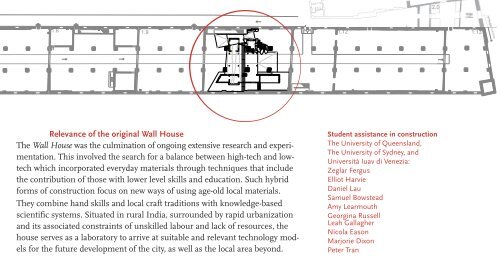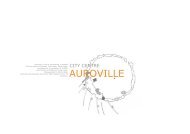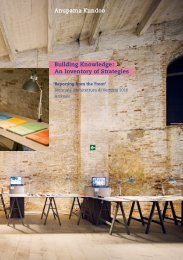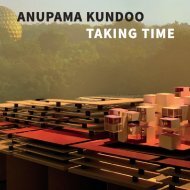Concept. Anupama Kundoo 'Feel the Ground' Venice Biennale 2012
'Feel the Ground. Wall House: One to One' was an invited installation, as part of 'Common Ground' curated by David Chipperfield for the 13th international architecture exhibition of 'la Biennale di Venezia'. Anupama Kundoo's Wall House in Auroville was constructed in full scale, making the point that architecture is a collaborative act, and that we are more common than we are different across the globe, regardless of our diversity. The curators wrote: "Kundoo, has built an ambitious, 1:1 facsimili of the Wall House, a building she designed in Auroville in India in 2000. The common ground is in its making. A team of Indian craftsmen, some of whom had never left their home country, were brought to Venice to construct the project in collaboration with staff and students from the University of Queensland, and students from IUAV in Venice, creating skills exchange across 3 continents. The final piece embodies the dialogue between construct on cultures, and also is a showcase for Kundoo's architecture, a lyrical modernism at easy with the demands of its climate."
'Feel the Ground. Wall House: One to One' was an invited installation, as part of 'Common Ground' curated by David Chipperfield for the 13th international architecture exhibition of 'la Biennale di Venezia'. Anupama Kundoo's Wall House in Auroville was constructed in full scale, making the point that architecture is a collaborative act, and that we are more common than we are different across the globe, regardless of our diversity.
The curators wrote: "Kundoo, has built an ambitious, 1:1 facsimili of the Wall House, a building she designed in Auroville in India in 2000. The common ground is in its making. A team of Indian craftsmen, some of whom had never left their home country, were brought to Venice to construct the project in collaboration with staff and students from the University of Queensland, and students from IUAV in Venice, creating skills exchange across 3 continents. The final piece embodies the dialogue between construct on cultures, and also is a showcase for Kundoo's architecture, a lyrical modernism at easy with the demands of its climate."
You also want an ePaper? Increase the reach of your titles
YUMPU automatically turns print PDFs into web optimized ePapers that Google loves.
Relevance of <strong>the</strong> original Wall House<br />
The Wall House was <strong>the</strong> culmination of ongoing extensive research and experimentation.<br />
This involved <strong>the</strong> search for a balance between high-tech and lowtech<br />
which incorporated everyday materials through techniques that include<br />
<strong>the</strong> contribution of those with lower level skills and education. Such hybrid<br />
forms of construction focus on new ways of using age-old local materials.<br />
They combine hand skills and local craft traditions with knowledge-based<br />
scientific systems. Situated in rural India, surrounded by rapid urbanization<br />
and its associated constraints of unskilled labour and lack of resources, <strong>the</strong><br />
house serves as a laboratory to arrive at suitable and relevant technology models<br />
for <strong>the</strong> future development of <strong>the</strong> city, as well as <strong>the</strong> local area beyond.<br />
Student assistance in construction<br />
The University of Queensland,<br />
The University of Sydney, and<br />
Università Iuav di Venezia:<br />
Zeglar Fergus<br />
Elliot Harvie<br />
Daniel Lau<br />
Samuel Bowstead<br />
Amy Learmouth<br />
Georgina Russell<br />
Leah Gallagher<br />
Nicola Eason<br />
Marjorie Dixon<br />
Peter Tran








